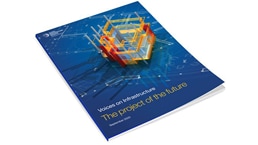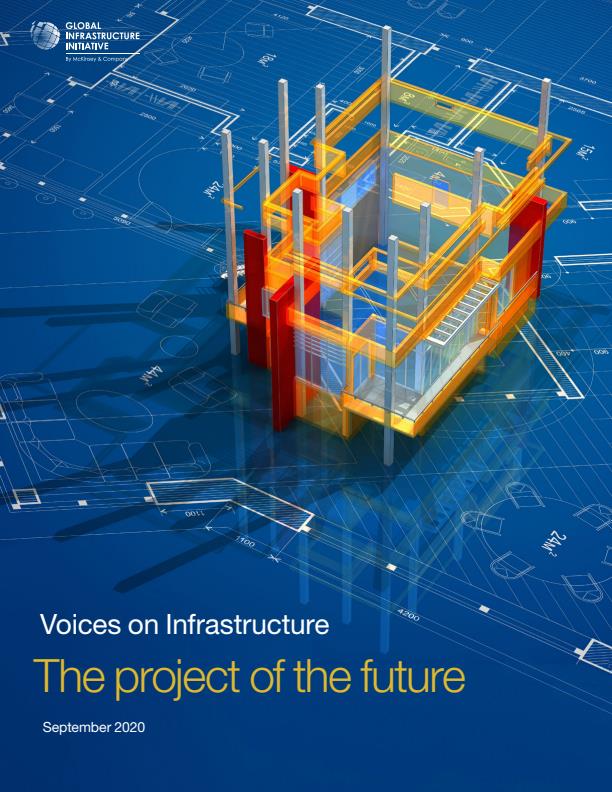The 2020s are a make-it-or-break-it decade for addressing climate change: humanity must halve its carbon emissions by 2030 to meet the goals of the Paris Agreement. Given that buildings contribute around 40 percent of greenhouse gas (GHG) emissions worldwide, it is critical that architecture, engineering, and construction (AEC) professionals understand their role in reducing the sector’s carbon footprint—and how to use the tools available to assist them.
For years now, the industry has focused its climate efforts on operational-energy consumption from lighting, heating, cooling, hot water, and other plug loads. And it has made great strides in increasing efficiencies and renewable-energy supplies. However, there is another, less obvious source of GHG emissions associated with buildings: embodied carbon. It’s already in the atmosphere, quietly warming our planet, by the time materials reach the project site. And for new buildings, its climate impacts are nearly even with those of operational energy.
Embodied carbon consists of all the GHG emissions associated with building construction, including those that arise from extracting, transporting, manufacturing, and installing building materials on site, as well as the operational and end-of-life emissions associated with those materials. “Cradle to gate” embodied carbon refers to the emissions associated with only the production of building materials, from raw material extraction to the manufacturing of finished products; it can be thought of as supply-chain carbon, and it accounts for the vast majority of a building’s total embodied carbon.
Unfortunately, embodied carbon is more difficult to measure and track than operational carbon, which is relatively simple to extrapolate from occupants’ energy bills. Determining the embodied carbon of any building material is impossible to ascertain from the finished product alone and requires self-assessment and process transparency on the part of the manufacturer. Two materials may look identical, cost the same amount, perform to the same standard—but have totally different embodied carbon characteristics. For example, a 100 percent recycled-steel beam produced using renewable energy may appear identical to a virgin-steel beam produced using a coal-fired furnace—but have significantly different levels of embodied carbon. Where each steel beam came from and how far it was transported add further complexity.
Accordingly, a nonprofit consortium of construction-industry players came together to develop what is now known as the Embodied Carbon in Construction Calculator (EC3): a free, cloud-based, open-source tool that utilizes data to power better materials choices and tackle cradle-to-gate embodied carbon.
Would you like to learn more about our Capital Projects & Infrastructure Practice?
Calculating embodied carbon
What gets measured gets managed.
The primary function of EC3 is to accelerate and scale the reduction of embodied carbon in the built environment. Building-industry users can easily access and view material carbon-emissions data for products manufactured within a defined geography, thus enabling carbon-smart choices during design and procurement. What would have taken experts days can now be accomplished in minutes by general practitioners.
Integrating EC3 with standard building-information modeling (BIM) tools can further extend its utility. The resulting industry-wide connectivity allows AEC professionals to transfer quantitative project-material data directly from the building’s digital model to EC3, and then visualize the embodied carbon impacts of their materials choices.
Perhaps the most powerful factor in EC3’s fast carbon benchmarking is its underpinning materials-data strategy, which allows users to rank locally produced materials by embodied carbon performance. The data is drawn from publicly available materials datasheets called “environmental product declarations” (EPDs)—which are easily consulted one at a time, but not in large numbers. Having collated more than 23,000 EPDs, EC3 scrapes the embodied carbon metric from each one, along with the material’s performance specifications and location of manufacture.
As a result, building professionals can quickly see how materials stack up against one another within their supply region, making it simple to distinguish between, say, two identical-looking steel beams.
EC3 is the product of industry collaboration by general contractors, structural engineers, architecture firms, materials manufacturers, technology companies, and academics.1 The project quickly attracted a broad consortium of AEC firms—including a number of competitors—that banded together for mutual benefit. This coopetition allowed EC3’s developers to build their methodology and validate ideas with input from a large cross-section of industry, ensuring the tool’s quality and relevance.
The community of partners and sponsor companies continues to expand. Microsoft was the first to pilot the tool on a large project during the campus remodel of its corporate headquarters in Redmond, Washington.2 And in a recent blog post, Bill Gates recognized EC3 as the type of technology that will aid us in getting to zero emissions.3Further, the Port of Seattle is using EC3 in pilot projects,4 Skanska US has reduced embodied carbon in its projects by as much as 30 percent without increasing procurement costs, and California-based Webcor is rolling out EC3 on all future projects.

Voices on Infrastructure: The project of the future
Solving construction’s sustainability challenges through collaboration
At a high level, the challenges around climate change that the AEC industry faces today require true collective effort, outside-the-box thinking, and openness. AEC firms across disciplines can move the needle on global greenhouse gas emissions much faster when they rally around a shared solution. The coopetition behind EC3 can therefore serve as an important catalyst for change. In this age of heightened concern over data privacy, the precompetitive openness and willingness to share data and best practices to reduce embodied carbon is truly striking.
EC3 also signals what the connected platforms of a sustainable future will look like. Open data and collaboration across silos are going to be key, and the technology the industry uses to measure and reduce the environmental footprints of buildings is starting to reflect that. EC3’s underlying data set brings together standardized material-manufacturer information, making it open and geolocated. And BIM connects the whole AEC value chain across project phases. Together, these technologies deliver data-driven insights on a unified platform, empowering better decision making throughout the project life cycle.
Inspiration can spur the creators of tomorrow’s sustainability solutions—perhaps to address embodied carbon in other parts of the built environment, such as roadways. As BIM adoption grows, Autodesk has recognized the tremendous opportunity to create an open platform and partner with the creators of these tools to deliver ever-better insights to customers through seamless experiences.
With new models of collaborative solution development powered by connected data, it may become possible to cut GHG emissions dramatically in less than a generation. We all have a part to play in making the sustainability solutions of the future easy for, accessible to, and trusted by the industries we serve. Banding together to beat back the tide will benefit us all.
This article was part of the Global Infrastructure Initiative’s September 2020 issue of Voices.


